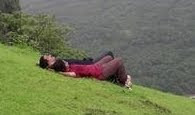Destructive DDT
I am reading John Grisham’s ‘The Appeal.’ A chemical company dumps toxic waste into a small town’s water supply and makes the town a ‘cancer cluster.’ The locals fight a long legal battle and get a verdict against the conglomerate. The company plays many dirty games to get the verdict reversed in the appeal.
The DDT factory by Hindustan Insecticides Ltd (HIL), manufacturing DDT and Endosulfan, is located in the industrial belt around the Eloor and Edayar villages near Aluva, Ernakulam. One of my father’s friends used to work at this factory and we once visited him. Since it was his duty hours, his son took us to the factory and we met him outside the gate. The smell of DDT was quite strong there. That was some 20 years back. I still remember the heaviness of the air.
Shaji’s article explains in detail how all kinds of life in the entire area is severely affects by the factory and its product. Well-water has become unfit for drinking, large tracts of land have turned uncultivable, many species of fish have disappeared from the waterbodies and several others are threatened or endangered, and so on. Worst of all, incidence of breast cancer and complications related to reproduction are increasing in the region. Ironically, this was revealed by a health survey conducted this year by the Kerala government.
DDT is classified as one of the most hazardous chemicals and its use is banned in
According to an article on DDT in www.scienceclarified.com, DDT is used today in such African nations as
In December 2000, in a convention organized by the United Nations Environment Program, 122 nations agreed to a treaty banning twelve very toxic chemicals. Included among the twelve was DDT. However, the treaty allowed the use of DDT to combat malaria until other alternatives become available. Before it can take effect, the treaty must be ratified by 50 of the nations that agreed to it in principle.
So these poor nations have no choice than to continue using DDT. And our government is cashing in on this, but at the cost of the health of its own people and environment.
Shaji’s article says that the studies conducted by various expert organizations have confirmed the hazard caused by DDT in the region. But the government has refused to shut down the factory. Instead, the factory management refutes the claim of the activists by saying that employees, who are in close contact with the chemical, are not affected. The union and the workers support management’s argument, fearing loss of job.
Read the full article here …
So what can we do as people here?
- How many workers will get affected if the factory closes down?
- What alternative job can they do?
- Is there a viable business idea that can be implemented in the region that will employ the factory workers as well as benefit the locality?
- What can be done to undo the damages caused by the pollution since 1956, at least to some extent?
If the activists can take the workers into confidence by developing an alternative for their current job, I think there are chances that the pressure on the government will mount. It may also come a few steps down and maybe either close down the factory, or switch to another product and implement better effluent treatment processes.
These are my thoughts as an armchair revolutionary. :-)
However, I remember a case study on Effective Deployment of Quality Management Systems, Implementation of Orderliness and Cleanliness in Process Plants by Gujarat Alkalies and Chemicals Ltd for the ‘Best Manufacturing Practices’ award by Frost & Sullivan in 2005. It was about how the company transformed the factory premises and the region where the highly polluting factory is located into a green belt. I don’t remember the details, but it’s an example worth emulating.


1 comments:
yes. eloor is a highly polluted area. have heard scary stories of how plants wither during certain months when toxic emissions r high.
wish the youth wings of political parties took to the streets to open the eyes of the powers that be on these issues.
there should be a ministry for polllution control per se.
wonder what we can do otherthan arm chair critiquing!
Post a Comment